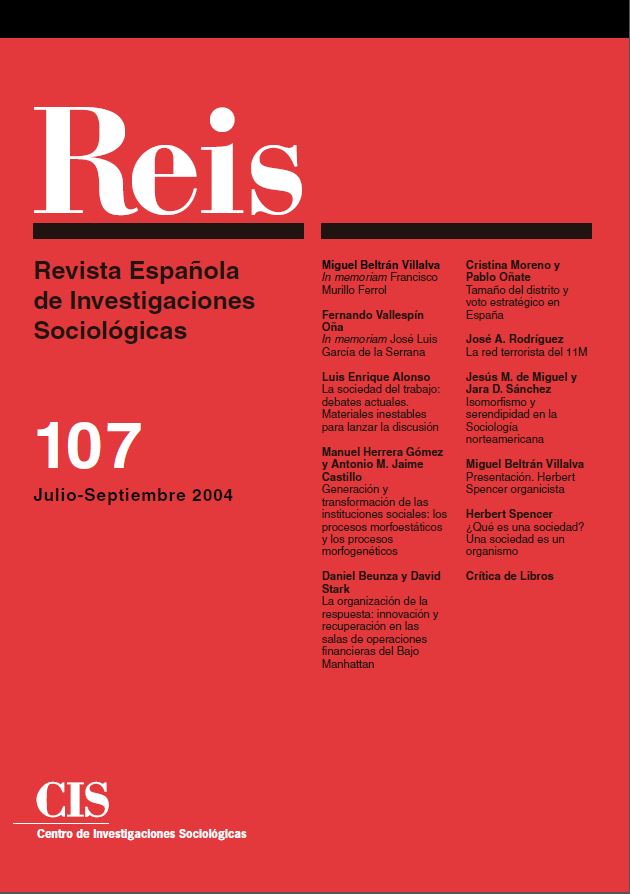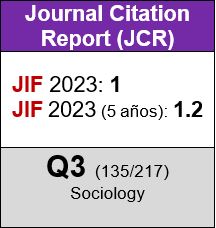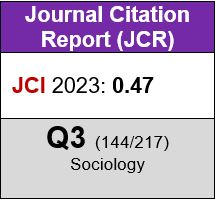La red terrorista del 11M
DOI:
https://doi.org/10.5477/cis/reis.107.155Palabras clave:
Redes Sociales, Terrorismo, Nuevas Formas Organizativas, Acción ColectivaResumen
El elemento central que caracteriza a la nueva sociedad-red es precisamente la relevancia creciente de la red
(los sistemas relacionales) como nueva forma organizativa, de estructuración, y de articulación de la acción
colectiva. Los atentados terroristas del 11S y del 11M son claras muestras de ello. Uno de los problemas fundamentales
para entender y hacer frente a este nuevo fenómeno es precisamente su forma y dinámica de red,
para la cual las aproximaciones teóricas y metodológicas dominantes en la Sociología (fundamentalmente basadas
en actores individuales y agrupamientos categóricos) no están bien preparadas. En este trabajo analizamos
la red terrorista del 11M usando la aproximación teórica y metodológica ajustada al fenómeno: el análisis
de redes. Esta aproximación nos permite analizar, y visualizar, su composición y dinámica, la centralidad
de los actores, los agrupamientos y sistemas de cohesión internos, y los papeles sociales diferenciados. Para
ello utilizamos matrices relacionales, que recogen las relaciones (hechas públicas) entre los implicados, y programas
estadísticos y de visualización específicos de redes (Ucinet6, Netdraw, Key Player). Con todo ello pretendemos
mostrar la importancia y contribución de esta nueva forma de analizar la información social para
mejor entender nuestra dinámica social.
Descargas
Descargas
Publicado
Cómo citar
Número
Sección
Licencia
Derechos de autor 2024 Revista Española de Investigaciones Sociológicas

Esta obra está bajo una licencia internacional Creative Commons Atribución-CompartirIgual 4.0.
Permite Compartir — copiar y redistribuir el material en cualquier medio o formato, Adaptar — remezclar, transformar y construir a partir del material para cualquier propósito, incluso comercialmente.








